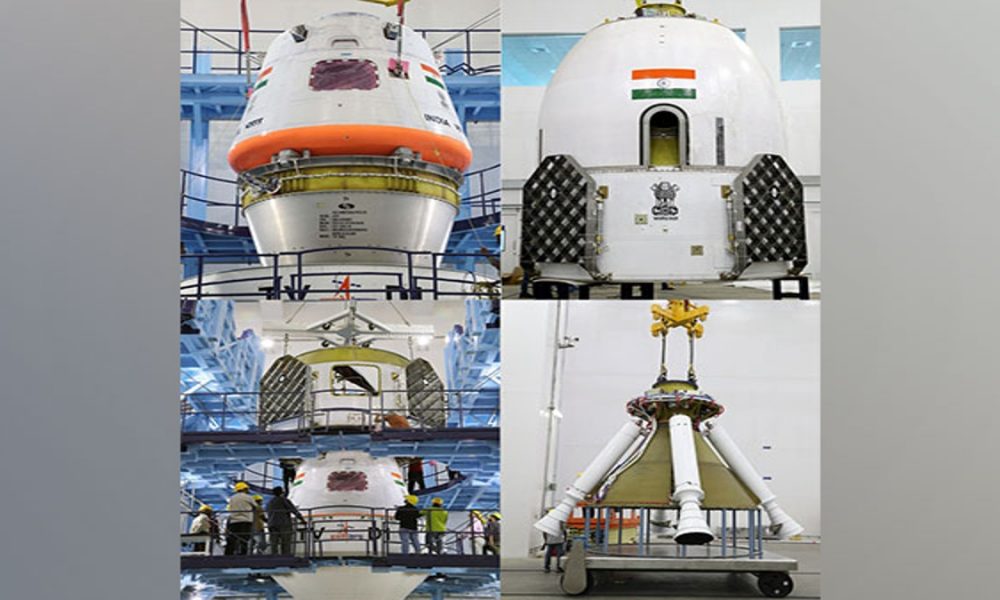
New Delhi: ISRO is all set for the Flight Test Vehicle Abort Mission a key part of its ambitious human space mission Gaganyaan, between 7 am and 9 am this Saturday, the space agency confirmed on Monday through a post on X.
The Test Vehicle is a single-stage liquid rocket developed for this abort mission. The payloads consist of the crew module (CM) and crew escape systems (CES), along with others.
Mission Gaganyaan:
The TV-D1 test flight is scheduled for
🗓️October 21, 2023
🕛between 7 am and 9 am
🚩from SDSC-SHAR, Sriharikota #Gaganyaan pic.twitter.com/7NbMC4YdYD— ISRO (@isro) October 16, 2023
This flight will simulate the abort condition during the ascent trajectory. Crew escape systems with crude modules will be separated from the test vehicle at an altitude of about 17 km. Subsequently, the abort sequence will be executed autonomously commencing with the separation of crew escape systems and deployment of the series of parachutes, finally culminating in the safe touchdown of crew module in the sea, about 10 km from the coast of Sriharikota.
The crew module after its integration progress underwent various electrical testing, at ISRO’s facility in Bengaluru, and has been dispatched to Sriharikota on August 13.
This test will be a significant milestone for the overall Gaganyaan programme as a near-complete system is integrated for a flight test. The success of this test flight will set the stage for the remaining qualification tests and unmanned missions, leading to the first Gaganyaan mission with Indian astronauts.
ISRO Chief S Somanath had on Saturday said there would be at least three more tests of the same nature in the coming days.
Gaganyaan: Flight Test Vehicle Abort Mission scheduled for Saturday
Read @ANI Story | https://t.co/ZZvlcHWMsP#Gaganyaan #ISRO #TestVehicle pic.twitter.com/2heA5fzf93
— ANI Digital (@ani_digital) October 16, 2023
Gaganyaan project envisages a demonstration of human spaceflight capability by launching a crew of 3 members to an orbit of 400 km for a 3-day mission and bringing them back safely to earth, by landing in Indian sea waters.
This program will make India the fourth nation to launch a manned spaceflight mission after the US, Russia, and China.
The Gaganyaan mission entails the safe transportation of astronauts to space and back. A crucial component of this mission is the deployment of drogue parachutes, which play a pivotal role in stabilizing the crew module and reducing its velocity to a safe level during re-entry.
Mission Gaganyaan:
ISRO to commence unmanned flight tests for the Gaganyaan mission.Preparations for the Flight Test Vehicle Abort Mission-1 (TV-D1), which demonstrates the performance of the Crew Escape System, are underway.https://t.co/HSY0qfVDEH @indiannavy #Gaganyaan pic.twitter.com/XszSDEqs7w
— ISRO (@isro) October 7, 2023
On August 23, India took a giant leap as the Chandrayaan-3 lander module successfully landed on the moon’s South Pole, making it the first country to have achieved the historic feat and bringing to an end the disappointment over the crash landing of the Chandrayaan-2, four years ago. India became the fourth country – after the US, China, and Russia – to have successfully landed on the moon’s surface.
After having landed, the Vikram lander and the Pragyan rover performed different sets of tasks on the lunar surface, including finding the presence of sulphur and other minor elements, recording relative temperature, and listening to movements around it.
Soon after the soft landing of Chandrayaan-3, India launched its maiden solar mission Aditya-L1 on September 2. So far in its journey, the spacecraft has undergone four earth-bound manoeuvres and a Trans-Lagrangean Point 1 Insertion (TL1I) manoeuvres, all successfully. In the process, the spacecraft successfully escaped the sphere of Earth’s influence.
In latest, the Aditya-L1 spacecraft performed a trajectory correction manoeuvre (TCM), for about 16 seconds, which was needed to correct the trajectory evaluated after tracking to keep it in its intended path.




